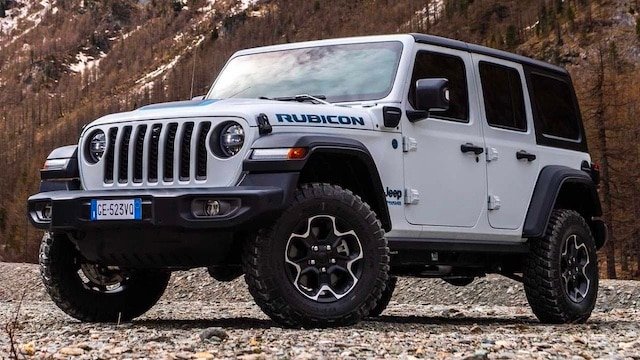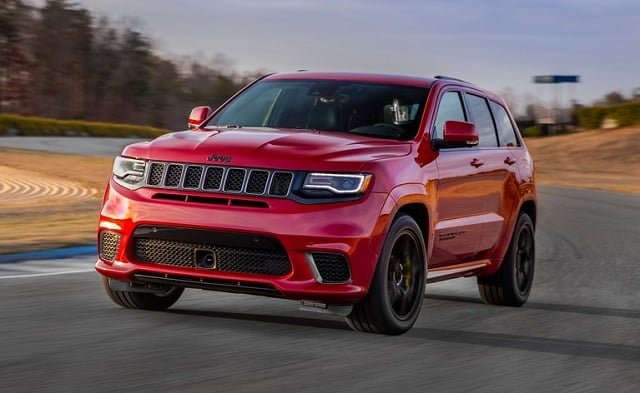While the Jeep Cherokee isn’t notorious for heater problems, there are times when it just won’t work. The reasons could range from minor issues that you can fix on your own to serious ones that would require the attention of an auto repair expert.
In this article, we’d be looking at some of the common reasons why the Jeep Cherokee heater won’t work, and what you can do to fix the issue.

- Jeep Cherokee Heater Not Working: Likely Causes
- Jeep Cherokee Heater Not Working: How to Fix
- Top up the coolant
- Replace the thermostat
- Fix the coolant hoses and tighten the clamps
- Check for radiator leaks
- Replace the faulty radiator cap
- Replace the thermostatic switch if faulty
- Flush the heater core’s internal passages
- Clean the heater core exterior
- Fix the heater valves
- Fix the blower fan
- Final Thoughts
Jeep Cherokee Heater Not Working: Likely Causes
- Low level of coolant
- Faulty wiring or a blown fuse
- Defective thermostat
- Clogged heater core exterior
- Faulty thermostat switch
- Radiator leak
- Faulty water pump
- Clogged heater core internal passages
- Faulty heater valves
- Presence of airlock
- Bad coolant hoses or loose clamps
- Faulty blower fan
Jeep Cherokee Heater Not Working: How to Fix
Here are some things you can do on your own to fix your Jeep Cherokee heater’s problem.
Top up the coolant
If you’re experiencing issues with your car heating system, the first thing to do is to check the coolant level. It is most likely that you’re running low on coolant and topping up the coolant would solve the problem.
Before doing this, you should check the hoses for leaks and look out for a head gasket leak. This could pose other problems that topping up the coolant won’t solve. If you notice any leaks, then you should get it fixed.
Replace the thermostat
This is another fix that won’t require a techie mind to handle. The thermostat acts as a valve in the cooling system and if it is faulty, it will hinder heat production by delaying the engine warm-up.
To solve this, you would have to test the thermostat by boiling it in water to see if it closes. This would involve you draining the coolant and then fixing the new thermostat if you’ve confirmed that the former is faulty.
Fix the coolant hoses and tighten the clamps
The coolant hoses might have to be changed and the clamps tightened to get the heating system back to normal. To confirm that there is a problem with the hoses and clamps, you would have to perform a visual inspection for any signs of deterioration. If you find any, then you should either fix or replace them.
Check for radiator leaks
If you notice puddles of coolant under the front of your vehicle, there are chances you’re dealing with a radiator leak. This will keep the coolant level too low which will hinder heat production. A leaking radiator would have to be repaired immediately or replaced by your mechanic.
Replace the faulty radiator cap
The radiator cap also acts as a pressure regulator or an escape valve that ensures that the pressure in the cooling system never gets too high. However, if it stays stuck in an open position, then there won’t be enough pressure in the system and the coolant won’t get hot enough reducing the heat output. Replacing the radiator cap with a new one would solve this problem.
Replace the thermostatic switch if faulty
In most modern vehicles, you will find a thermostatically controlled electric fan that comes on when the engine needs additional cooling. If the thermostatic switch is defective, the fan will run continuously which will reduce the coolant temperature drastically leaving you with no heat in the cabin.
You should be able to confirm this problem by checking if the fan runs all the time even from a cold start. If you’re able to confirm it, then you would need to get the thermostatic switch replaced.
Flush the heater core’s internal passages
The heater core’s internal passages could get clogged with consistent use or when you don’t maintain your car properly by replacing the coolant at the right time or flushing the cooling system at the scheduled time.
To get this solve, you need to have your mechanic flush the heater’s core passages. If this doesn’t fix the problem, then you might have to shop for a replacement heat core
Clean the heater core exterior
On the outside of the heater core are the heat-radiating fins that could also get clogged with debris from the outside air intake at the base of the windshield. If you can access the heater core yourself, then you try to clean the debris from the fins to see if it solves the problem. Also, check the air intake passages.
Fix the heater valves
The heater valves are designed to control the heat output from the heater core so you can determine just how much heat you want coming into the interior. If they get faulty or get stuck in the closed position, you won’t get any heat entering into the cabin. Depending on your model, your vehicle could be making use of mechanical or vacuum-operated valves or electronic valves.
If your car uses manual valves that require you to turn a rotary knob to operate, you could easily get it fixed and the faulty components replaced. However, if yours makes use of electronic valves like with electronic climate control systems, then you would have to get your mechanic to troubleshoot the system to isolate the cause of the problem.
Fix the blower fan
The reason why you’re not getting any heat in the interior could be a fault in the blower fan. This fault could be a result of a blown fuse, faulty wiring, or that the blower fan needs replacement. You might be able to check the fuse and replace it on your own but issues like faulty wiring and replacing the blower fan should be left to your mechanic.
Final Thoughts
If you’re using an older model car, you might be having issues with your water pump which would have to be checked. You will also need to watch for air locks when topping up the coolant as they could hinder the coolant circulation.






